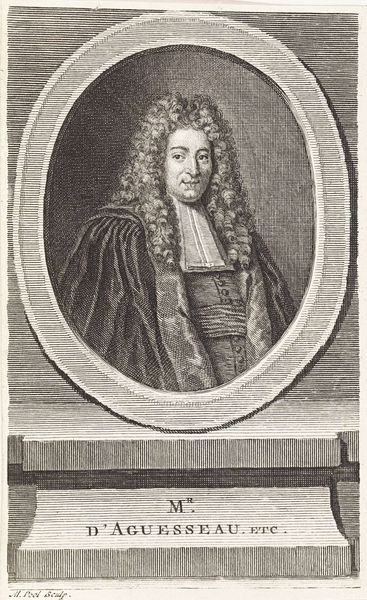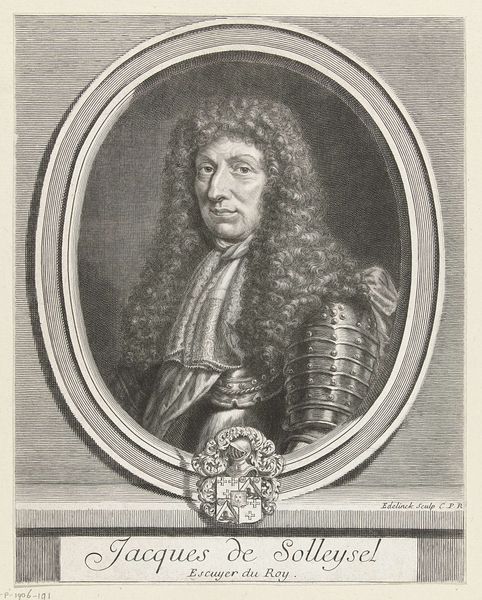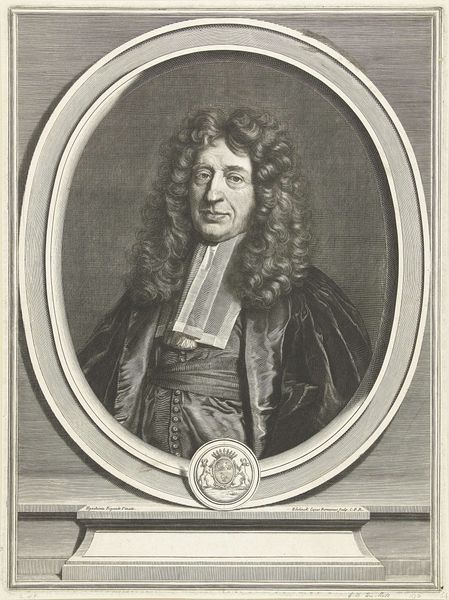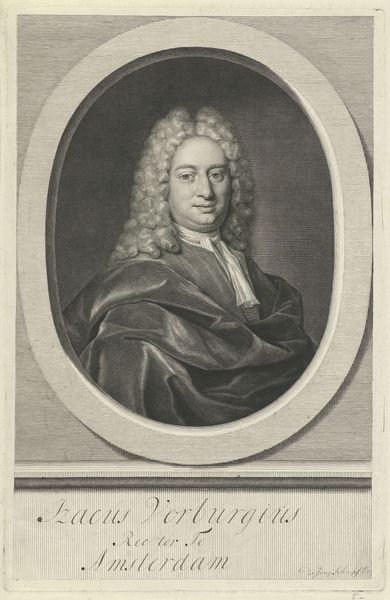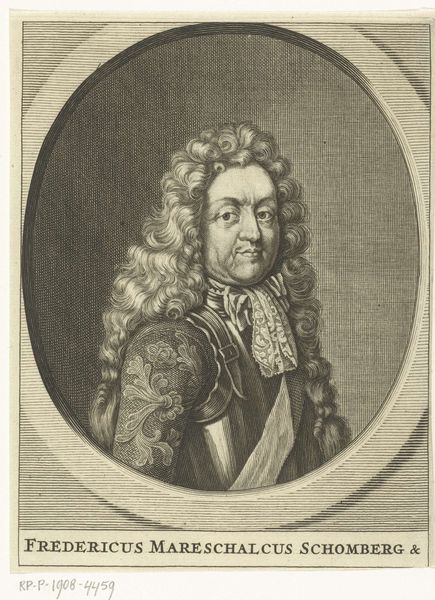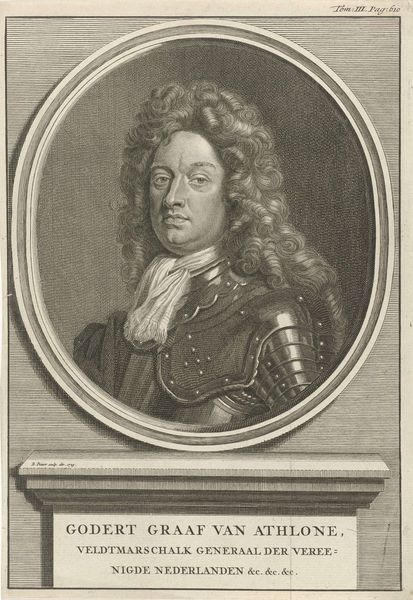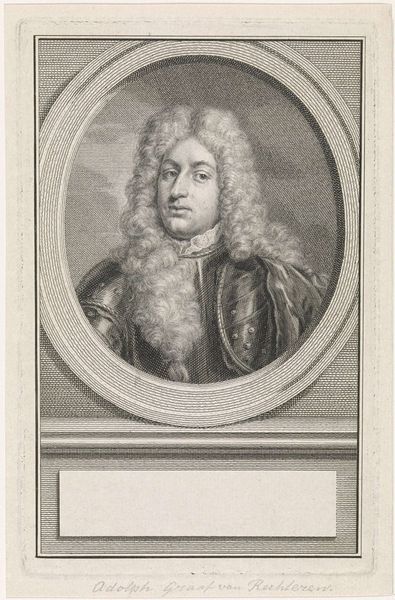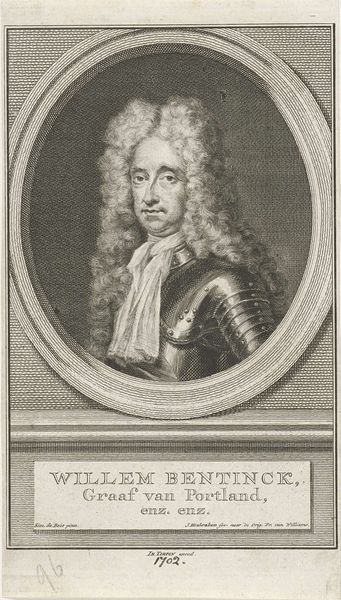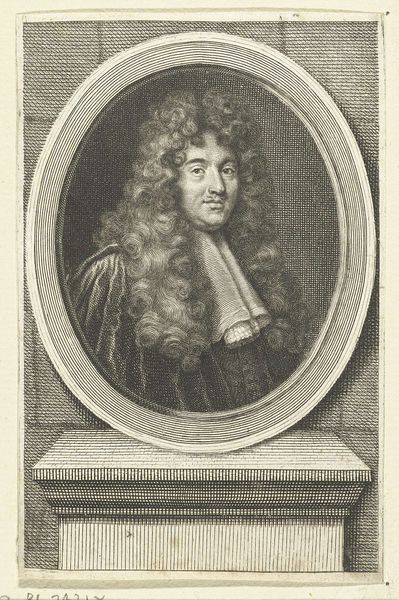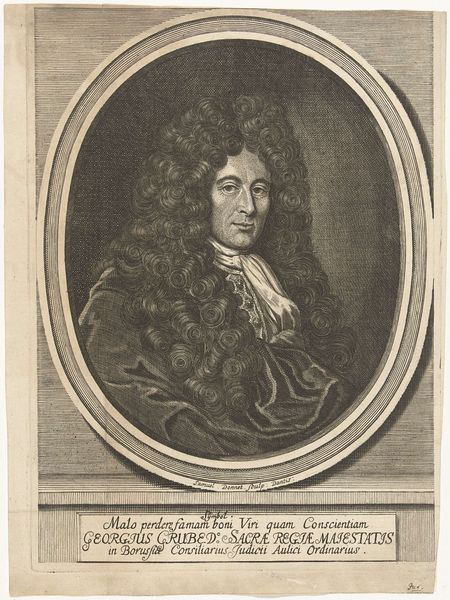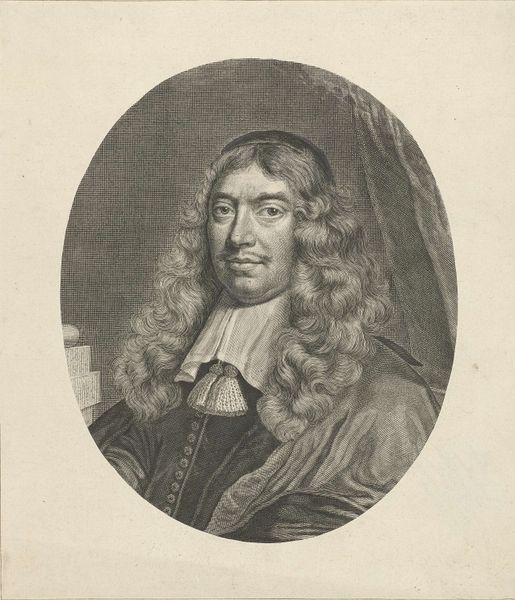
Dimensions: height 195 mm, width 128 mm
Copyright: Rijks Museum: Open Domain
Editor: Here we have a portrait of Koenraad van Beuningen, an engraving from between 1842 and 1897 by Christiaan Lodewijk van Kesteren. There's such a formality and stoicism to it that speaks of another time. What’s your interpretation of this portrait? Curator: Well, considering it's an engraving made decades after the death of van Beuningen, who was a very important figure in the Dutch Golden Age, we need to consider the political implications of creating this image, and displaying it in a public collection like the Rijksmuseum. Who was the intended audience and what message was the artist trying to send, and what message did the museum intend to send when accepting it into the collection? Editor: So, not just a picture of a guy in a wig! What sorts of messages were common in portraits like this at the time? Curator: Engravings like these were often commissioned to celebrate or legitimize political power and wealth. By referencing the visual language of Baroque portraiture and figures from the past, it places the subject within a historical narrative. It is important to think about how the engraver, the institution displaying this artwork, and the Dutch public would respond to such artistic license, especially if there were disagreements with van Beuningen's past actions. Editor: I see – so it's not just about the individual, but about fitting them into a particular story that someone wants to tell. Curator: Precisely! And recognizing the intended and unintended results on a population of showing images like this is critical when considering the role of art, both now and in the past. Editor: That adds so much depth! I’ll definitely be looking at art with a wider lens from now on. Curator: Wonderful. Remember, art never exists in a vacuum; it's always part of a larger conversation.
Comments
No comments
Be the first to comment and join the conversation on the ultimate creative platform.


